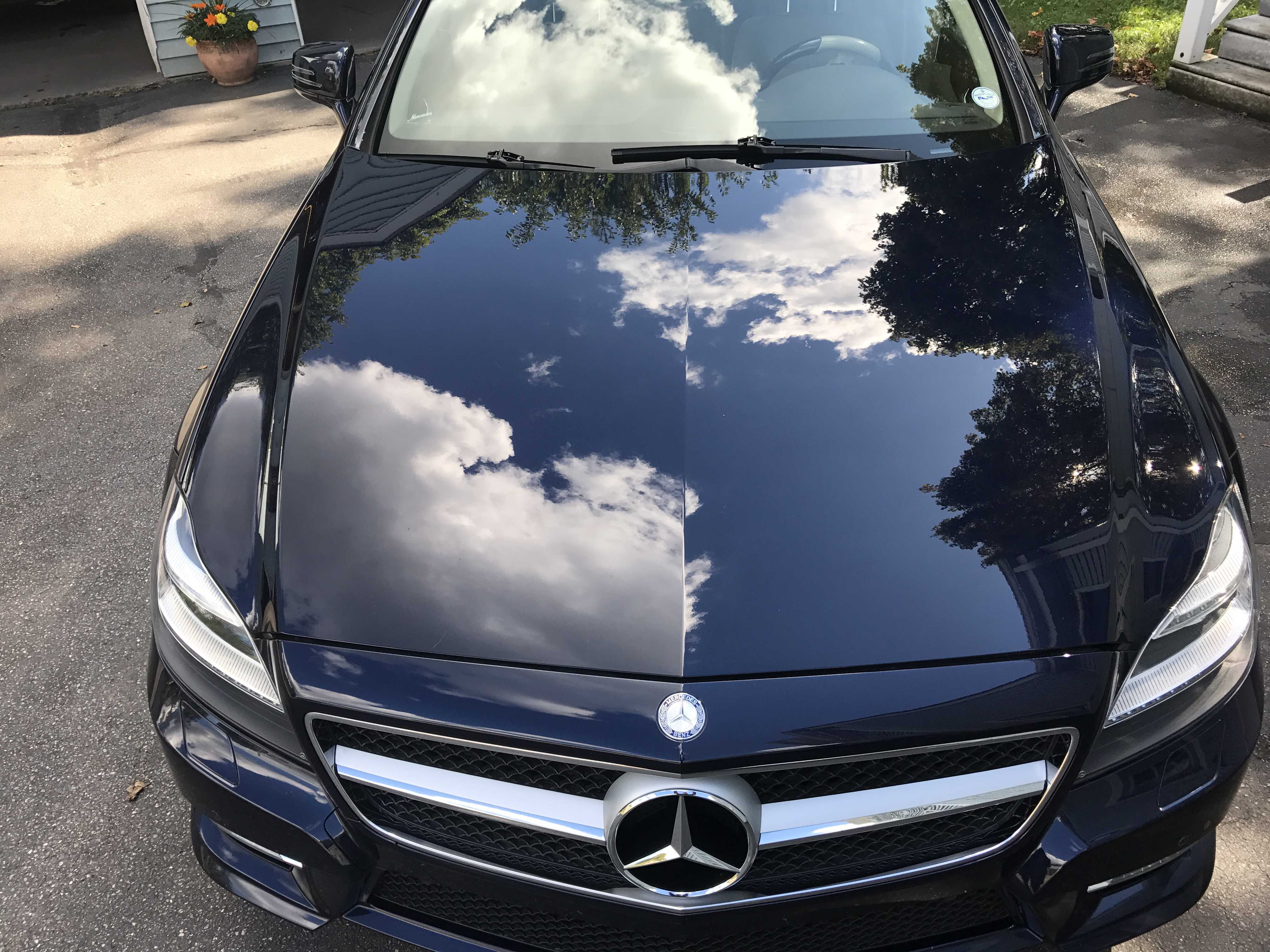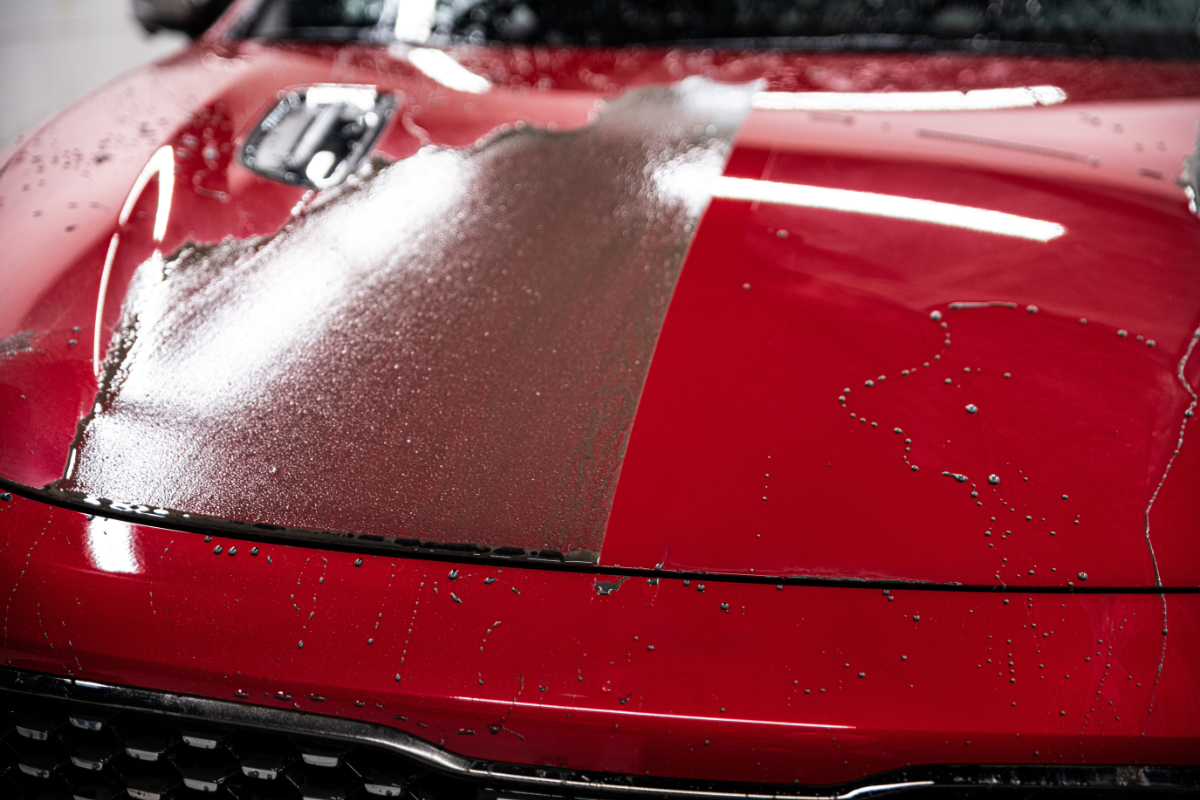Introducing the Scientific Research Behind Ceramic Coatings: Exactly How Does It Job and Why Is It Above Typical Options?
Ceramic finishings have been getting appeal in different markets for their extraordinary performance and durability. Comprehending just how ceramic coverings work and why they outmatch standard alternatives is important for those looking for to improve the longevity and durability of their products.
The Chemistry of Ceramic Coatings
In understanding ceramic layers, delving right into the detailed chemistry behind their structure is crucial for realizing their capability and toughness. Ceramic finishings are primarily made up of silicon dioxide (SiO2), which develops a solid and protective layer when applied to numerous surfaces. This chemical framework provides exceptional resistance to warm, chemicals, and corrosion, making ceramic coatings extremely searched for for a variety of applications.
The chemistry behind ceramic coatings includes the development of covalent bonds in between silicon and oxygen atoms, producing a rigid network that improves the coating's strength and resilience. In addition, the visibility of other components such as zirconium, aluminum, and titanium more enhances the covering's buildings, using raised hardness and adhesion to surfaces.
Recognizing the chemical make-up of ceramic coverings enables the personalization of solutions to match details requirements, whether it be for automobile, commercial, or property objectives. By harnessing the power of chemistry, ceramic finishings proceed to lead the means for superior security and efficiency in different markets.
Advantages of Ceramic Coatings

As a result, ceramic coatings make cleansing and keeping surface areas a lot less complicated and less time-consuming. On the whole, the plethora of advantages offered by ceramic layers make them a remarkable choice compared to typical layer approaches.
Just How Ceramic Coatings Bond
Ceramic finishes bond to surfaces with a process that entails molecular bond and chemical interactions. When a ceramic covering is applied to a surface, it creates a strong bond by chemically adhering to the surface at a molecular degree.
Additionally, the chemical communications in between the ceramic finish and the surface even more enhance the bond. ceramic coatings san jose. These communications enable the ceramic coating to develop a continuous and seamless layer externally, giving superb security and resilience. Unlike traditional coverings that might rest on the surface area without completely bonding, ceramic coatings develop a long-term bond that is resistant to chemicals, UV rays, and rough ecological conditions

Fundamentally, the bonding device of ceramic coatings makes sure a durable and effective safety layer that exceeds traditional coating choices. This premium bond adds to the resilience, scrape resistance, and longevity of ceramic finishes, making them a preferred option for various applications.
Sturdiness of Ceramic Coatings
The extraordinary durability of ceramic layers stems from their durable molecular attachment and chemical home interactions with surface areas, ensuring a durable safety layer that exceeds typical finishing choices. Once applied, ceramic finishings develop a solid bond with the substratum, creating a durable obstacle against different ecological stressors such as UV radiation, chemicals, and abrasions. This bond is so protected that it can stand up to the roughness of everyday usage without deteriorating or deteriorating swiftly.
Unlike typical layers that might deteriorate over time, ceramic coverings maintain their honesty for an extended period, giving long-lasting security for the underlying surface area. In general, the extraordinary sturdiness of ceramic finishings makes them an exceptional choice for protecting a broad range of surface areas in various applications.
Ceramic Coatings Vs. Conventional Options
In comparison to conventional finishing techniques, ceramic coatings use a distinctive mix of resilience and safety capabilities that set them apart in different surface area protection applications. Conventional choices such as wax or sealants supply a short-lived layer of defense that can diminish quickly, calling for constant reapplication. On the other hand, ceramic coverings form a strong bond with the surface area, developing a semi-permanent or irreversible obstacle that is very immune to abrasion, chemicals, UV rays, and extreme temperatures.
Furthermore, ceramic coverings provide remarkable hydrophobic residential or commercial properties compared to traditional layers. The hydrophobic nature of ceramic layers creates water to grain up and roll off the surface area, bring dust and impurities with it. This self-cleaning effect aids to maintain the surface official source area's sanitation and gloss for extended periods, decreasing the need for constant upkeep.
Furthermore, ceramic finishings have a thicker layer compared to standard choices, providing boosted scratch resistance and protection versus small impacts. This toughness guarantees long-lasting efficiency and helps preserve the aesthetic allure of the treated surface for an extensive period.
Verdict
Finally, the science behind ceramic coverings hinges on their chemical structure and bonding homes, making them above traditional alternatives. The benefits of ceramic layers consist of enhanced longevity and defense for surface areas. By understanding exactly how ceramic coverings job and their benefits over conventional choices, one can make informed decisions when thinking about coating options for different applications.
Unlike conventional coatings that may rest on the surface area without totally bonding, ceramic coverings produce a permanent bond that is immune like this to chemicals, UV rays, and harsh environmental conditions.
The phenomenal longevity of ceramic coverings stems from their durable molecular adhesion and chemical interactions with surfaces, making certain a durable protective layer that goes beyond conventional finishing options.Unlike traditional coverings that may degrade over time, ceramic layers preserve their integrity for an extended period, supplying resilient defense for the underlying surface.In comparison to conventional finishing techniques, ceramic coatings supply a distinct mix of sturdiness and safety capabilities that set them apart in numerous surface area security applications. By comprehending exactly how ceramic coverings work and their advantages over traditional options, one can make enlightened choices when thinking about layer alternatives for different applications.